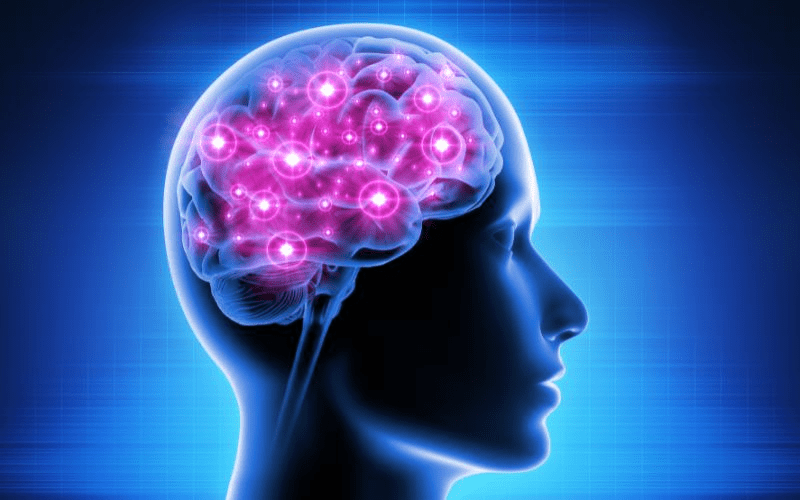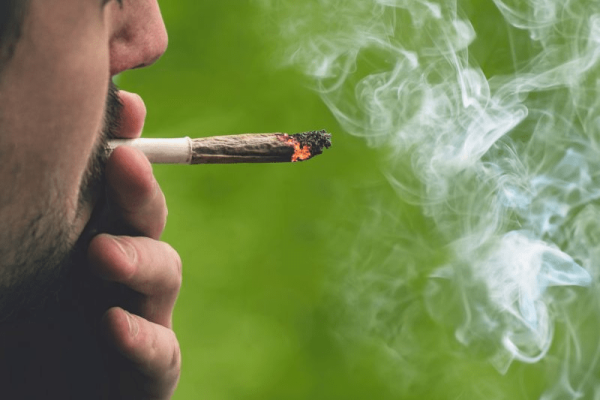Introducing the Endocannabinoid System

The endocannabinoid system (ECS) is a complex cell-signaling system that exists in the bodies of humans and other animals. It is composed of three main components: endocannabinoids, receptors, and enzymes.
Endocannabinoids
Endocannabinoids are naturally occurring compounds that are similar in structure to cannabinoids found in cannabis, but they are produced by the body. The two main endocannabinoids that have been identified so far are anandamide (AEA) and 2-arachidonoylglycerol (2-AG). Endocannabinoids are synthesized on demand in response to various physiological cues and act as messengers or signaling molecules in the ECS.
Receptors
Receptors are proteins that are found on the surface of cells throughout the body, and they interact with endocannabinoids and cannabinoids from external sources (such as cannabis) to transmit signals. The two main types of receptors in the ECS are CB1 receptors, which are primarily found in the central nervous system (CNS), including the brain and spinal cord, and CB2 receptors, which are primarily found in the peripheral nervous system (PNS) and immune cells. When endocannabinoids or cannabinoids bind to these receptors, they trigger a cascade of cellular events that regulate various physiological processes.
Enzymes
Enzymes are responsible for breaking down endocannabinoids once they have fulfilled their role in transmitting signals. The two main enzymes involved in the ECS are fatty acid amide hydrolase (FAAH), which breaks down anandamide, and monoacylglycerol lipase (MAGL), which breaks down 2-AG. Enzymes help to maintain the balance of endocannabinoids in the body and regulate the duration and intensity of their effects.
The ECS plays a crucial role in maintaining homeostasis, or balance, in the body by regulating various physiological processes, including mood, appetite, sleep, pain perception, immune function, and inflammation. It acts as a modulatory system that helps to fine-tune the activity of other systems in the body, including the nervous, immune, and endocrine systems. The ECS has also been implicated in numerous health conditions, and research into its functions and potential therapeutic applications is ongoing.
Exploring the
Benefits of
Cannabis

Cannabis has been used for various medicinal and recreational purposes for centuries. The plant contains numerous chemical compounds called cannabinoids, which interact with the body’s endocannabinoid system to produce various effects. Here are some potential benefits of cannabis:
Pain Relief
Cannabis has analgesic properties and can provide relief from various types of pain, including chronic pain, neuropathic pain, and inflammatory pain. Medical marijuana is commonly used by patients with conditions such as arthritis, multiple sclerosis, fibromyalgia, and cancer-related pain.
Reduced Nausea and Vomiting
Cannabis has antiemetic properties and can help reduce nausea and vomiting associated with chemotherapy-induced nausea and vomiting (CINV) in cancer patients, as well as nausea and vomiting caused by other medical conditions or treatments.
Improved Sleep
Cannabis has sedative properties and may help improve sleep quality and duration, especially for individuals with insomnia or other sleep disorders.
Reduced Anxiety and Depression
Cannabis has potential anxiolytic and antidepressant properties and may help reduce symptoms of anxiety disorders and depression in some individuals. However, it’s important to note that cannabis can also exacerbate anxiety or depression in susceptible individuals, and the effects can vary depending on the strain and dosage used.
Muscle Relaxation and Spasticity Reduction
Cannabis has muscle relaxant properties and can help reduce muscle spasms, tremors, and spasticity associated with conditions such as multiple sclerosis, Parkinson’s disease, and spinal cord injuries.
Appetite Stimulation
Cannabis has appetite-stimulating properties and can help increase appetite, which may be beneficial for individuals with conditions that cause loss of appetite or weight loss, such as cancer, HIV/AIDS, or eating disorders.
Potential Anti-inflammatory and Neuroprotective Effects
Some cannabinoids found in cannabis, such as cannabidiol (CBD), have potential anti-inflammatory and neuroprotective properties. These properties may have therapeutic benefits for conditions such as inflammatory bowel disease, neurodegenerative diseases like Alzheimer’s and Parkinson’s, and autoimmune conditions.
Epilepsy Management
Some forms of cannabis, particularly CBD-rich strains, have shown promising results in reducing the frequency and severity of seizures in certain types of epilepsy, such as Dravet syndrome and Lennox-Gastaut syndrome.
Other Potential Therapeutic Uses
Cannabis is being studied for its potential therapeutic uses in various other conditions, such as glaucoma, post-traumatic stress disorder (PTSD), autism spectrum disorder (ASD), and more.
It’s important to note that the therapeutic use of cannabis should be done under the guidance of a qualified healthcare professional, and compliance with local laws and regulations regarding cannabis use is essential. Cannabis products can also have potential risks and side effects, and individual responses can vary. It’s important to carefully consider the potential benefits and risks of cannabis use and make informed decisions.
Overview of Cannabinoids- How they Interact with the ECS
Cannabinoids are chemical compounds that are naturally found in the Cannabis plant. They are responsible for many of the effects of cannabis, including its psychoactive and medicinal properties. There are over 100 cannabinoids that have been identified in cannabis, and they interact with the body’s endocannabinoid system (ECS), which plays a role in regulating various physiological processes.

The two most well-known cannabinoids found in cannabis are delta-9-tetrahydrocannabinol (THC) and cannabidiol (CBD). THC is the primary psychoactive compound in cannabis, responsible for the “high” sensation typically associated with marijuana use. THC interacts with cannabinoid receptors in the ECS, primarily the CB1 receptors located in the brain and central nervous system, resulting in its psychoactive effects.
CBD, on the other hand, is non-psychoactive and does not produce the same intoxicating effects as THC. CBD has gained attention for its potential therapeutic properties, including its anti-inflammatory, analgesic, anxiolytic, and antipsychotic effects. Unlike THC, CBD does not directly bind to cannabinoid receptors, but it can modulate their activity and interact with other receptors in the body, including serotonin and vanilloid receptors.
In addition to THC and CBD, there are other cannabinoids found in cannabis that have their own unique properties and potential effects on the body. Some examples include cannabigerol (CBG), cannabichromene (CBC), cannabinol (CBN), and tetrahydrocannabivarin (THCV), among others. These cannabinoids may interact with the ECS and other receptors in the body in different ways, leading to a wide range of potential therapeutic effects.
Cannabinoids can also be synthesized or extracted from cannabis plants for medicinal use, and pharmaceutical formulations of cannabinoids have been approved for certain medical conditions in some jurisdictions. However, the legal status of cannabinoids varies by country and region, and it’s important to understand the local laws and regulations regarding the use of cannabinoids for recreational or medicinal purposes.
Research into cannabinoids and their potential therapeutic applications is ongoing, and they continue to be studied for their potential benefits in various health conditions, such as chronic pain, epilepsy, multiple sclerosis, cancer, and mental health disorders.
How do Cannabinoids Interact with the Endocannabinoid System?
The two primary cannabinoid receptors in the endocannabinoid system are CB1 and CB2 receptors. CB1 receptors are primarily found in the central nervous system (CNS) including the brain, while CB2 receptors are primarily found in the peripheral nervous system and immune cells. Cannabinoids can interact with these receptors, either directly or indirectly, to modulate their activity and influence the physiological processes regulated by the ECS.
When cannabinoids bind to CB1 receptors in the central nervous system, they can produce various effects, including the psychoactive effects associated with recreational cannabis. CB1 receptors are primarily located in areas of the brain associated with memory, mood, appetite, pain perception, and motor function, among others.
CB2 receptors, on the other hand, are primarily found in immune cells and peripheral tissues, and their activation is associated with immune modulation, anti-inflammatory effects, and other physiological processes related to immune system function.
Cannabinoids can also interact with other components of the ECS, including enzymes responsible for the synthesis and breakdown of endocannabinoids, which are naturally occurring cannabinoids produced by the body. For example, cannabinoids can inhibit the activity of the enzyme fatty acid amide hydrolase (FAAH), which is responsible for breaking down the endocannabinoid anandamide, thereby increasing its levels in the body and prolonging its effects.
Furthermore, cannabinoids can also interact with other receptors in the body, such as serotonin receptors, vanilloid receptors, and others, which may contribute to their diverse effects on various physiological processes.
The specific interactions between cannabinoids and the ECS can vary depending on the type of cannabinoid, the specific receptor or enzyme involved, the concentration of the cannabinoid, and the overall physiological context. These interactions can lead to a wide range of potential effects, including analgesic (pain-relieving), anti-inflammatory, anti-anxiety, antiemetic (anti-nausea), and neuroprotective effects, among others.
Different Methods of Cannabis Consumption and their Effects on the Body
There are various methods of cannabis consumption, each with its own advantages, disadvantages, and effects. Here are some of the most common methods:
Inhalation
Inhalation is one of the most popular methods of cannabis consumption and involves smoking or vaporizing cannabis flower or concentrates. Smoking typically involves combusting cannabis flower and inhaling the smoke, while vaporizing involves heating cannabis to a temperature that releases cannabinoids and terpenes as a vapor without combustion.

Inhaling cannabis allows for a rapid onset of effects, typically within minutes. This can be beneficial for those seeking immediate relief from symptoms such as pain, nausea, or anxiety, as well as those who prefer a shorter duration of effects. Inhaling cannabis also allows for greater control over dosage, as you can take small puffs or hits to titrate the desired effect, which can be particularly useful for those who need to manage their cannabis consumption more closely.
Inhaling cannabis, particularly through smoking, can potentially have negative effects on respiratory health, similar to smoking tobacco. It can cause irritation to the lungs and airways, and may contribute to respiratory issues over time. Another downside to smoking cannabis is that it does produce a distinct smell that may linger and be noticeable to others. Additionally, smoking cannabis can still carry a social stigma in some places or situations, which could be a concern for some users.

Oral ingestion
Consuming cannabis orally involves ingesting it in various forms, such as edibles, capsules, or oils, which are then absorbed through the digestive system. Oral ingestion typically results in slower onset of effects compared to inhalation, as cannabinoids must pass through the digestive tract and liver before entering the bloodstream. Effects may also be more prolonged, but can be variable and slower to titrate due to the unpredictable nature of digestion and metabolism.
Unlike inhaling cannabis, eating it does not pose risks to respiratory health, as it does not involve smoking or vaporizing. This can be advantageous for individuals concerned about potential respiratory issues associated with inhaling cannabis. Another advantage to edible cannabis products is that they can be consumed discreetly, as they do not produce the same distinct smell associated with smoking cannabis. This can be useful for those who want to consume cannabis without drawing attention to themselves or who are in situations where smoking is not allowed.
Orally ingested cannabis products can take longer to produce effects compared to inhaling cannabis, as they need to be digested and metabolized in the liver before the cannabinoids are absorbed into the bloodstream. This delayed onset can be challenging for users who are looking for immediate relief or who may inadvertently consume more before feeling the full effects, which can result in overconsumption and discomfort.
The effects of edible cannabis can be more intense and unpredictable compared to inhalation, due to the way they are metabolized in the liver. Factors such as individual metabolism, tolerance, and sensitivity can affect the experience, making it difficult to predict the exact outcome. This can lead to unexpected and uncomfortable effects, such as increased heart rate, anxiety, or impairment, particularly for inexperienced users or those with low tolerance.
Topical application
Cannabis can also be applied topically in the form of lotions, balms, salves, or oils, which are absorbed through the skin. Topical application is typically used for localized relief, such as for pain or inflammation, and is not expected to produce systemic effects as cannabinoids do not usually penetrate deeply into the bloodstream.
Unlike other forms of cannabis consumption, such as inhalation or ingestion, topical cannabis products are typically non-intoxicating, meaning they do not produce a psychoactive effect. This can be advantageous for users who want to avoid the cognitive effects of cannabis or who need to function normally without impairment.
Additionally, cannabinoids in topical cannabis products are generally absorbed locally and do not typically enter the bloodstream in significant amounts. This can reduce the risk of systemic side effects or interactions with other medications, making topical cannabis products a potentially safer option for some users. They are also generally easy to apply and integrate into a daily routine, as they do not require any special equipment or preparation, and users can apply them directly to the affected area without the need for ingestion or inhalation.
While topical cannabis products can provide localized relief, one drawback is that they may not be as effective for conditions that require systemic effects, such as widespread pain or systemic inflammation. The cannabinoids in topical products typically do not penetrate deeply into the bloodstream or reach distant areas of the body, which may limit their effectiveness for certain conditions. Some users may also experience skin irritation or allergic reactions to the ingredients in topical cannabis products, such as carrier oils or other added ingredients, which is why it is important to carefully review the product ingredients and perform a patch test before applying a topical cannabis product to a larger area of the skin, especially for users with sensitive skin or known allergies.
The availability and regulation of topical cannabis products can vary by jurisdiction. In some areas, topical cannabis products may not be widely available or may have limited options in terms of formulations, strengths, or quality. It’s important to ensure that the topical cannabis products being used are obtained from reputable sources and comply with local laws and regulations.
The Entourage Effect
The entourage effect is a phenomenon in which the combination of various cannabinoids, terpenes, and other compounds found in cannabis work synergistically to produce a greater therapeutic effect on the endocannabinoid system than what could be achieved by each compound individually. In other words, it suggests that the overall effects of cannabis are not solely attributed to a single cannabinoid, but rather the collective action of multiple compounds working together.
The concept of the entourage effect was first proposed by Dr. Raphael Mechoulam, a renowned cannabis researcher who discovered THC in the 1960s. Dr. Mechoulam and his team found that cannabinoids, including THC and CBD, often have more potent effects when used in combination with other cannabinoids or cannabis-derived compounds, compared to when used in isolation.
One example of the entourage effect is the interaction between THC and CBD. While THC is known for its psychoactive properties, CBD is non-psychoactive and has been shown to counteract some of the psychoactive effects of THC, such as anxiety and paranoia. CBD has also been shown to have its own therapeutic properties, including anti-inflammatory, analgesic, and anti-anxiety effects. When THC and CBD are used together, they can modulate each other’s effects and potentially enhance their overall therapeutic benefits.
Strategies for Dosing Cannabis
The importance of dosage when using cannabis products cannot be overstated. The appropriate dosage can greatly affect the safety, efficacy, and overall experience of using cannabis. Here are some key points that highlight the importance of dosage:
Safety
Proper dosage is crucial for ensuring the safety of cannabis use. Cannabis products can have varying levels of cannabinoids, such as THC (tetrahydrocannabinol) and CBD (cannabidiol), which are responsible for their effects. Taking too much THC, for example, can lead to adverse effects like anxiety, paranoia, impaired coordination, and increased heart rate. On the other hand, taking too little may not provide the desired therapeutic effects. Determining the right dosage helps minimize the risk of experiencing negative side effects and promotes safe cannabis use.
Efficacy
The effectiveness of cannabis products is closely tied to dosage. Different conditions or symptoms may require different dosages for optimal results. Too low of a dosage may not provide adequate relief, while too high of a dosage may be unnecessary and wasteful. Finding the right dosage that works for an individual’s specific needs and condition is essential for maximizing the therapeutic potential of cannabis products.
Individual Variability
Cannabis affects individuals differently, and the ideal dosage can vary greatly from person to person. Factors such as body weight, metabolism, tolerance, sensitivity, and prior cannabis experience can all influence how an individual responds to cannabis. It’s crucial to start with a low dosage and titrate slowly, based on individual response and feedback from the body, to find the optimal dosage for each person.
Different Routes of Administration
Cannabis products can be consumed in various ways, including inhalation, ingestion, topical application, and sublingual administration, each with its own unique pharmacokinetics and bioavailability. Dosages may differ significantly depending on the route of administration. For example, edibles generally have a slower onset and longer duration compared to inhalation, and dosages for edibles should be approached with caution due to the potential for delayed effects.
Product Variability
Cannabis products can vary in potency, formulation, and concentration of cannabinoids, making it crucial to carefully read labels, understand product strengths, and follow dosage recommendations provided by the manufacturer or a qualified healthcare professional. Different strains, brands, and products may have different effects and dosing requirements, so it’s important to consider these variables when determining the appropriate dosage.
Legal and Regulatory Considerations
Cannabis laws and regulations vary by jurisdiction, and it’s essential to comply with local laws regarding cannabis use and dosage. Some jurisdictions may have specific guidelines or restrictions on cannabis dosages, especially for medical cannabis use. It’s important to be aware of and follow the laws and regulations in the area of use to ensure legal and responsible cannabis consumption.
In summary, determining the right dosage when using cannabis products is crucial for ensuring safety, efficacy, and optimal therapeutic effects. It’s important to start with a low dosage, titrate slowly based on individual response, consider route of administration, product variability, and comply with local laws and regulations. Consulting with a qualified healthcare professional or a cannabis expert can also provide valuable guidance on dosing for specific conditions or needs.



